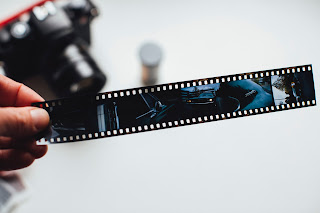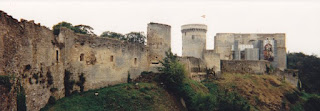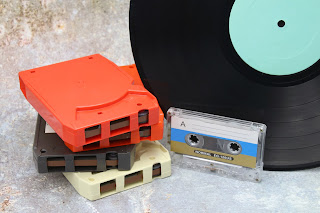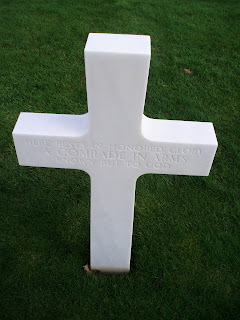"SA-PA-TOOOOOOS! SIYAY!" "BALUUUUUUT!"
These and more were a regular sound living in the Philippines. Street vendors pushed carts or carried their wares and shouted out what they were selling. If the musical Oliver! were reset in the Philippines, I imagine the above calls, along with others, would start out the song "Who Will Buy?" (For the record, the above calls translate to "Shoes! Shine!" and, well...I'll just say that balut is surprisingly delicious, considering how it looks and sounds when described. I think I'll go with "hard-boiled eggs on steroids." I would put a full description of it on a level with Scandinavian lutefisk, though the two dishes are nothing alike, aside from involving meat.)
 |
| Sari-Sari Store Photo by Free2barredo CC BY-SA 4.0 license |
They had markets where they sold produce, meat, and other things. Those markets smelled fishy. There were markets where you could buy souvenirs. We had sukis, or vendors that we would visit regularly when we needed the specific wares they sold, and we would get to know them. They often gave us great discounts as we became friends. Bargaining is an art form in the Philippines, and it was a unit in Tagalog class in school. We generally started the bargaining in English, and they would come down a bit, but they would only go so far when speaking English. Then we would switch to Tagalog. They were often surprised, and more willing to bargain further.
National Bookstore was a large chain in the Philippines, and one of my favorite places to go, as reading filled up most of my spare time when I wasn't grounded from reading. 😀 We had a shopping mall called Greenhills where we often went. They also had some great restaurants. As malls got more popular, Robinson's opened all over the place. It's a chain of malls, like Carrefour in France and elsewhere. (In fact, I recently found out that Tum Nak Thai, the restaurant we visited in Bangkok and the largest restaurant in the world at the time, is gone, and they now have a Carrefour and a Robinson's in its place. One single restaurant was replaced by two malls.) I remember Robinson's Galleria in Manila. I have heard that they have continued to open more and larger malls in the Philippines since we left in 1991.
Coming to the US, we found grocery stores were similar. Safeway, Albertson's, Fred Meyer and QFC were everywhere in the Seattle area. (Fred Meyer and QFC are currently owned by Kroger. When I visited Utah last year, I went to Smith's, which I had never heard of, and they honored my Fred Meyer rewards card because they are also owned by Kroger.) Albertson's is now owned by Safeway, so many of the Albertson's in the area have converted to Safeway. There a few Wal-marts in the area.
There were video stores all over the place. Blockbuster was one of the largest chains. When DVDs replaced VHS, they adapted. Eventually, with Netflix and others, they were unable to compete and have mostly closed. There is only one Blockbuster left, in Oregon. Many grocery stores and electronics stores (such as Best Buy), and some surviving bookstores such as Barnes & Noble, still sell DVDs and Blu-Rays.
We had multiple malls in the Seattle area. Alderwood Mall in Lynnwood and Bell Square in Bellevue were huge. Northgate Mall in North Seattle was smaller, and was the oldest shopping mall in the US. Everett Mall in Everett was somewhere around the same size as Northgate. My grandparents used to walk there all the time. Totem Lake Mall in Kirkland was one of the smallest malls I've been to. There were others around as well. Of those, Totem Lake Mall was the first to close. For a long time, there was only one store left in the mall, and it was sad walking down the dark hallways with almost all the stores closed and nobody there. When the movie Warm Bodies came out (which involves zombies, for those who haven't seen it...basically Romeo & Juliet in reverse), I thought that mall would be a perfect place to film a sequel. It's gone now, with new developments in its place. More recently, Northgate Mall is mostly gone, replaced by a hockey rink and transit station. Last I knew, there were a few stores left, but it isn't really a mall any more. The other malls listed above are still there, but they have undergone a lot of changes over the years.
As the internet got more popular, I made more friends around the world. I was surprised to hear my friends in the Southeastern US talking about shopping buggies, as they are clearly called shopping carts. They have carts in the Philippines. They have carts in the Northwest US. They have carts in the Midwest and Southwest. They are called carts just about everywhere I had been. I had no idea people in other English-speaking regions called them something different! (Granted, they are called trolleys in the UK, if I remember right.) I always associated buggies with horse-drawn carriages.
There were several bookstore chains, such as Barnes & Noble, Borders, Waldenbooks and others. Waldenbooks and Borders have since closed. With Kindle and other electronic means of reading and listening to books, as well as the convenience of ordering online, the demand for brick-and-mortar bookstores has decreased considerably. (I had forgotten about Waldenbooks until I watched Stranger Things recently, streaming on Netflix.)
Online merchants got more common. Amazon has been one of the largest and most enduring. There are also others, such as eBay.
Speaking of online merchants, guess what? I don't do most of my shopping at the brick-and-mortar stores any more! I do shop at them sometimes, but lately I've increasingly used...I hope you're sitting down for this...my cell phone! Many things are much more convenient to order on Amazon and other online merchants. Since COVID, I've done a lot of my grocery shopping on the Instacart app and had it delivered. I am finding more and more that shopping on Instacart also helps me to avoid the annoying habit of groceries I didn't need "magically" jumping into my cart off the shelf and making me spend money I didn't need to spend. I can blame the groceries in question because they are inanimate and can't defend themselves.
Many stores have pickup options, which we have also used. You order and pay on the app, then drive to the store, and someone brings the groceries out to your car. (They have a part of the parking lot dedicated to this option, and you can tell them on the app which parking spot you are using.)
Shopping has changed a lot over the years. I can't speak for the Philippines, as I was last there in the '90s, but I have heard there have been a lot of changes there too. As far as I know, they still have sari-sari stores and malls and all the other stores mentioned above (at least, those mentioned in the part about the Philippines).


























.jpeg)